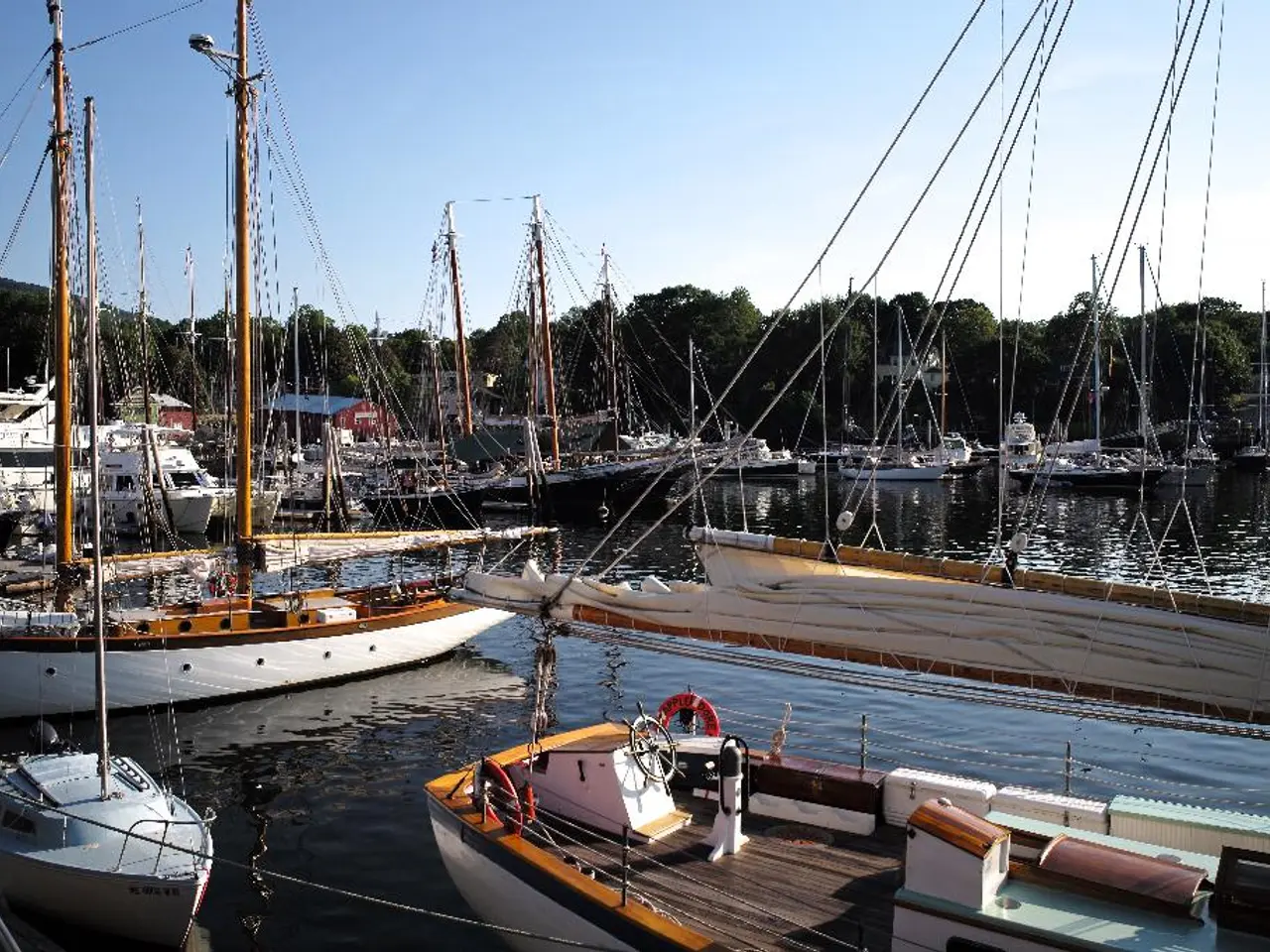Strength and Durability of Underwater Communication Lines
In the vast expanse of the Indo-Pacific region, subsea cable networks have become the backbone of digital information flows, carrying approximately 6,400 Terabits/sec (Tbps) of data [1]. However, the increasing vulnerability of these networks, due to factors like ageing, fishing activities, and geopolitical tensions, has raised concerns about their resilience and security.
To address these challenges, the Department of Foreign Affairs and Trade (DFAT) in Australia has established the "Cable Connectivity and Resilience Centre" to provide technical assistance and training across the Indo-Pacific. The aim is to further subsea cable resilience and security [2].
Singapore, a significant node for subsea cable connections, with more than 90 carriers connecting to it via 40 cable systems, is one of the most vulnerable regions in the Indo-Pacific subsea cable networks [3]. Major cable faults are on the rise, with about 55 major faults reported in the last two years [4]. To manage any failure in the routes to Singapore, efforts are being undertaken to find alternatives to Singapore for points of interconnection.
Repairing subsea cables is expensive, with repair ships costing between $80-130 million and specialized crews required [5]. The average repair duration for a cable fault is about 55 days [4]. To reduce dependency on foreign repair services and lower costs, India is developing a national cable repair fleet and capabilities.
India is also actively advancing a multi-faceted approach to boost the resilience and security of its submarine cable networks. Key improvements include expanding and upgrading submarine cable capacity, strengthening legal and regulatory frameworks, developing a national cable repair fleet, engaging in international and regional strategic partnerships, and using geofencing and monitoring technologies to create cable protection zones.
For instance, India's current protection measures for submarine cable networks include geofenced cable protection zones to deter physical intrusions, expansion and diversification of cable routes, and efforts to bolster national legislation to classify submarine cables as critical infrastructure [1][3]. India's India Asia Xpress cable system has a capacity of about 240 Tbps, and the India Europe Xpress has a capacity of 210 Tbps [6]. Seven cable systems connect India to Singapore, carrying data to South-East Asia, East Asia, and Australia/New Zealand [7]. There are 18 operational submarine cable systems connecting India to the rest of the world, with four more proposed [7].
In a move to protect its own subsea cables, Australia has introduced protection zones for cables of national significance with criminal penalties for any willful damage [8]. About 500,000 km of subsea cables are being planned in the coming years, aggregating to a capacity of approximately 20,000 Tbps [9].
Technological advancements such as self-healing cables and the use of Unmanned Autonomous Underwater Vehicles for effective monitoring of subsea cables can also contribute to improving the resilience and security of these critical infrastructure.
However, efforts to ensure the resilience and security of subsea cable networks must also consider broader contextual issues, such as harmonizing civilian and defense maritime interests, improving coordination with fishing communities to avoid conflicts, and enacting economic security policies modeled on other countries’ approaches.
In conclusion, the challenges faced by subsea cable networks are significant, but countries like Australia and India are leading the way in finding solutions through a combination of infrastructure expansion, legal protection, operational capability enhancement, and international cooperation.
Read also:
- Innovative Company ILiAD Technologies Introduces ILiAD+: Boosting Direct Lithium Extraction Technology's Efficiency Substantially
- Veolia advocates for sustainability by financing eco-friendly environmental projects
- Airbus is escalating the standards for eco-friendly aircraft fuel
- Rapid Expansion Anticipated for Lip-Sync Technology Sector at a Rate of 17.8%





